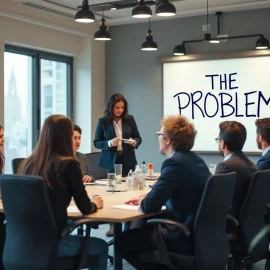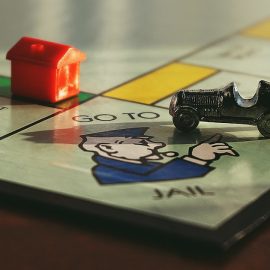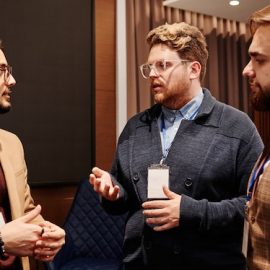

This article is an excerpt from the Shortform book guide to "Biased" by Jennifer L. Eberhardt. Shortform has the world's best summaries and analyses of books you should be reading.
Like this article? Sign up for a free trial here .
Is bias training a good solution to workplace bias? What incident forced Starbucks to reevaluate how they handle racism? How is moral credentialing a threat to racism progression?
In her book Biased, Dr. Jennifer Eberhardt discusses bias training at work and uses the 2018 Starbucks incident as a case study. Many companies used biased training as a crutch because they don’t know how else to deal with racism but it may not be the perfect solution.
Here’s some background on the Starbucks incident and a discussion on whether bias training is effective or not.
Bias Training in the Workplace
Bias in the workplace can be a difficult topic for employers to grapple with—and as a result, many companies are now holding formal bias training for their employees. However, professional bias training isn’t a foolproof solution (and can be expensive), so companies need to consider their options carefully. Many are following the example Starbucks set in 2018 that revolutionized the corporate approach to engaging with bias.
The Starbucks Incident
In May of 2018, police arrested two black men in a Philadelphia Starbucks for the simple crime of asking to use the restroom before purchasing anything. The men planned to meet their business partner there and were waiting to order until he arrived; the barista interpreted this as trespassing and called the police. Within ten minutes of that phone call, police had arrested the two men and physically removed them from the store. A white woman filmed the incident on her phone and posted it online, where it quickly went viral. In the video, the two black men are quiet and polite throughout the entire ordeal while other customers—including their white business partner, who arrived in the middle of the chaos—demand an explanation for the arrest.
Starbucks’s corporate response to this incident is a model for addressing racial bias in the workplace on a large scale. First, they addressed the incident itself by changing company policy to allow anyone to use the restroom—regardless of whether they’ve purchased something—and the Starbucks CEO traveled to Philadelphia to apologize to the two men in person. Then, Starbucks took their response a step further: Instead of just addressing the incident itself, they committed to confronting racial bias head-on by holding a four-hour implicit bias training for all 175,000 Starbucks employees. This training required closing down 8,000 Starbucks locations for the day, costing the company roughly $12 million.
“From Privilege to Progress”
The Starbucks incident also sparked change in another way. Melissa DePino (the white woman who filmed and tweeted the whole encounter) and Michelle Saahene (a Black woman who was the first to speak up during the incident) connected over their shared horror and frustration at the injustice they witnessed that day in Starbucks. Together, they launched “From Privilege to Progress,” an organization devoted to bringing white and Black people together to fight systemic and interpersonal racism. Through speaking engagements and online activism, they empower people to push past awkwardness and have hard, necessary conversations about racism.
Bias Training Is an Imperfect Solution
Bias training like the program Starbucks utilized is becoming increasingly popular in government, nonprofit, and for-profit organizations. The demand for this training has led to the sudden rise of private companies focused on creating bias training programs to pitch to other businesses. In many cases, these training sessions lead employees to profound personal realizations about the ways implicit bias impacts their own behavior; however, on a larger scale, we don’t yet know whether bias training actually reduces implicit bias.
According to Biased author Jennifer Eberhardt, part of the problem is that social scientists are reluctant to tackle the issue in the real world. They feel that scientists should focus on building and testing the perfect bias training program in the lab before exposing others to it. Eberhardt disagrees—she argues that waiting to act until we can test every step of a process with pure science often results in never acting at all. Instead, she argues that social scientists should embrace the uncertainty and develop theories based on their practical experience, rather than the other way around.
| Social Scientists: Don’t Be Afraid to Get Involved Eberhardt’s ideas on social scientists’ responsibility to get involved in practical applications of their research are backed up by Gordon Allport, the scientist who pioneered contact theory. In a 1941 article calling for psychologists to use their expertise to boost “civilian morale,” Allport wrote, “If the psychologist is tempted to say that he knows too little about the subject he may gain confidence by watching the inept way in which politicians, journalists, and men in public life fence with the problems of propaganda, public opinion, and morale.” |
Bias Training Prompts Moral Credentialing
Without empirical studies on the results of different training styles, it’s hard for bias educators to know the best ways to talk about bias. According to Eberhardt, this is especially complicated because people tend to rely on moral credentialing: the idea that if they’ve established a past reputation as an unbiased person when it comes to race, they’re entitled to express racial prejudice in the present without consequences. This is the proverbial “but I have black friends” defense, where people act as though befriending a black person means nothing they say from then on could possibly be racist. Moral credentialing doesn’t just affect individuals—companies are equally guilty of using their reputations as socially conscious organizations as an excuse for discrimination. The challenge for bias educators, then, is to deliver useful training while ensuring that training doesn’t become a “get out of racism-free” card.
To Resist Moral Credentialing, Slow Down and Refocus
Moral credentialing doesn’t just apply to people who have undergone formal bias training. For example, people who read Biased might rely on moral credentialing, too, by using their newfound knowledge of racial bias as an excuse not to question their own biases. To overcome that temptation, try these three strategies:
- Practice mindfulness. To prevent yourself from engaging in moral credentialing, you first need to notice when you’re in a situation that might trigger that response. Practicing mindfulness will help you focus on the present moment, so you’ll have a better chance of catching yourself before slipping into moral credentialing.
- Use the “two second rule.” In other words, before you let yourself off the antiracist hook, take two seconds to pause and think through your response. By slowing your thought process down, you switch from System 1 to System 2 thinking, as we learned in Chapters 1-2.
Focus on your goals and values, not on being a “good person.” If your goal is to practice antiracism, you’ll remember that you need to consistently resist racist ideas and policies. Similarly, if justice is an important value for you, you’ll be more motivated to question your biases to make sure you’re contributing to a just world.

———End of Preview———
Like what you just read? Read the rest of the world's best book summary and analysis of Jennifer L. Eberhardt's "Biased" at Shortform .
Here's what you'll find in our full Biased summary :
- How implicit bias forms in the brain
- Whether or not bias training actually works
- Why there has been a sudden resurgence in white nationalism






